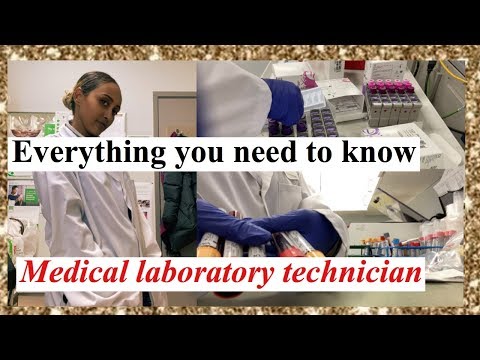The Medical Assistant: Chapter 1
Contents [show]
The medical assistant is a vital member of the healthcare team. In this first chapter, we will explore what Medical assistants do, their education and training, and the different types of medical assistant positions.
Checkout this video:
The Medical Assistant: Job Description
The medical assistant is a multi-skilled allied health professional who performs administrative and clinical tasks in support of physicians and other health care professionals. The medical assistant may be employed in a variety of health care settings, including physician offices, hospitals, clinics, and HMOs.
The medical assistant is responsible for a variety of administrative tasks, including patient scheduling, billing, and insurance processing. In addition, the medical assistant may be responsible for maintaining medical records transcribing physician orders, and preparing patients for examination. The medical assistant may also perform basic clinical tasks, such as taking vital signs and performing venipuncture.
The scope of practice for the medical assistant varies from state to state. In some states, the medical assistant may perform certain delegated tasks under the supervision of a licensed health care professional. In other states, the medical assistant may perform these tasks without direct supervision.
The Medical Assistant: Duties
The medical assistant is a health care professional who performs a variety of clinical and administrative tasks in a medical office or clinic. These duties may include taking and recording medical histories, measuring patients’ vital signs, preparing and administering medications, updating patients’ Medical records and scheduling appointments. Medical assistants may also be responsible for billing and coding, insurance claims processing, and other office duties.
The Medical Assistant: Education
The demand for highly skilled medical assistants is fuelling a growing need for postsecondary education and training in this field. while some medical assistants may be able to find entry-level positions with just a high school diploma, most employers prefer to hire those with formal training.
Medical assistant programs are commonly found at the certificate, diploma and associate’s degree levels. Some programs may offer evening or weekend courses to accommodate working students, and some schools offer online programs.
The Medical Assistant: Certification
There are many different medical assisting certifications that you can earn, but not all of them are created equal. The most important thing to remember is that not all medical assistant certifications are recognized by the American Medical Association (AMA). If you want to be sure that your certification will be recognized by employers, make sure it comes from an accredited source. The two main certifications offered by the AMA are the Certified Medical Assistant (CMA) and the Registered Medical Assistant (RMA).
There are other certifications that are offered by non-accredited organizations, but these will not be recognized by the AMA. If you choose to get a certification from a non-accredited organization, make sure that you research the organization thoroughly to make sure that it is reputable. There are many “diploma mills” out there that will sell you a worthless piece of paper.
Once you have decided which certification you would like to pursue, you will need to complete an accredited medical assisting program. These programs can be found at many community colleges and technical schools. Once you have completed your accredited program, you will then be eligible to take the certification exam.
The Medical Assistant: Salary
The average salary for a medical assistant is $14.14 per hour, or $29,310 per year. Medical assistants can expect to earn more as they gain experience and education. The median salary for medical assistants with one to three years of experience is $30,000 per year, while those with four or more years of experience earn a median salary of $33,000 per year.
The Medical Assistant: Job Outlook
The job outlook for medical assistants is very positive. The demand for qualified medical assistants is expected to grow much faster than the average for all occupations through 2024, according to the U.S. Department of Labor. Employment of medical assistants is projected to grow 23 percent from 2014 to 2024, much faster than the average for all occupations. The growing aging population will increase the demand for preventive medical services, which are often provided by medical assistants. As physicians expand their practices to include more patients, they will hire more medical assistants to do routine administrative and clinical tasks, allowing the physicians to see more patients.
The Medical Assistant: Career Paths
The medical assistant profession has many opportunities.explore the different career paths you can take as a medical assistant. Different medical assistants have different responsibilities, depending on their position and the state they work in. Some medical assistants perform administrative duties, such as answering phones, scheduling appointments, and billing patients. Other medical assistants may have more clinical responsibilities, such as taking medical histories, recording vital signs, and preparing patients for examination.
Medical assistants can work in a variety of healthcare settings, including hospitals, clinics, physician’s offices, and long-term care facilities. Some medical assistants specialize in a particular area of medicine, such as pediatrics or ophthalmology.
The Medical Assistant: Pros and Cons
The medical assistant: Pros and Cons of the job
The medical assistant: What are the pros and cons of the job?
The medical assistant: Advantages and disadvantages of the career
The Medical Assistant: 10 Reasons to Become a Medical Assistant
The medical assistant profession has been around for centuries, and it is one of the most important roles in healthcare. Here are 10 reasons why you should pursue a career as a medical assistant.
1. Medical assistants are in high demand. The Bureau of Labor Statistics projects that employment of medical assistants will grow 19 percent from 2016 to 2026, much faster than the average for all occupations. This growth is due to the increasing emphasis on preventive care and the growing number of ageing baby boomers.
2. Medical assistants are well compensated. The median annual wage for medical assistants was $32,480 in May 2016, and the top 10 percent earned more than $45,710. In addition, many employers offer benefits such as health insurance and paid vacation days.
3. Medical assistants can specialize in a particular area of medicine. There are many different specialties within the field of medicine, and each has its own unique set of challenges and rewards. By specializing in a particular area, you can become an expert in that field and help patients receive the best possible care.
4. Medical assistants can work in a variety of settings. Whether you’re interested in working in a hospital, clinic, or physician’s office, there are many different options available to medical assistants. You can also choose to work full-time or part-time, which gives you some flexibility in your career path.
5. Medical assistants have the opportunity to make a difference in patients’ lives every day. As a medical assistant, you play a vital role in ensuring that patients receive the care they need and deserve. You will have the satisfaction of knowing that you are making a real difference in people’s lives each and every day.
6. Medical assisting is a challenging and rewarding career. As a medical assistant, you will be constantly learning new things and expanding your skillset. You will also be working with people from all walks of life, which can be both challenging and rewarding at times.
7 – 10 Being a medical assistant allows you to: Have a stable career with good job security Help others by playing an important role in their healthcare Pursue further education if desired Work full-time or part-time Choose from several different career paths
The Medical Assistant: 5 Reasons to NOT Become a Medical Assistant
There are many reasons to NOT become a medical assistant. Here are 5 of them:
1. The job is extremely stressful. Medical assistants have a lot of responsibility and are often juggling multiple tasks at once. This can be very overwhelming and lead to burnout.
2. The pay is not great. Medical assistants typically make around $13 an hour, which is not a lot of money considering the amount of responsibility they have.
3. There is a lot of paperwork involved. Medical assistants have to deal with a lot of documentation, including medical records and insurance forms. This can be very tedious and time-consuming.
4. The hours can be long and irregular. Medical assistants often work long hours, including evenings and weekends. This can make it difficult to maintain a work/life balance.
5. There is a potential for exposure to infectious diseases. Since medical assistants come into contact with patients, there is a risk of exposure to contagious diseases.







